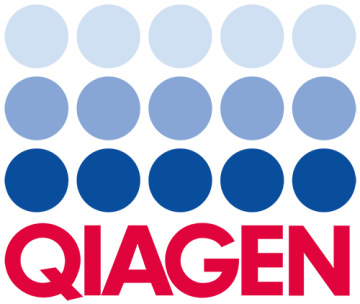
Piqray is a kinase inhibitor developed for use in combination with fulvestrant for the treatment of postmenopausal women, and men, with HR+/HER2-, PIK3CA-mutated, advanced or metastatic breast cancer following progression on or after endocrine-based regimen1. Piqray is approved in over 70 countries, including the US2. In the European member states, Piqray plus fulvestrant is approved after disease progression following endocrine therapy as monotherapy3.
Novartis is continuing to reimagine cancer with additional trials of Piqray. To complement the SOLAR-1 study, EPIK-B5, a large Phase III clinical trial is conducted with Piqray in combination with fulvestrant following treatment with a CDK4/6 inhibitor and aromatase inhibitor4. Novartis is also studying the potential of Piqray in triple-negative breast cancer (TNBC) in the EPIK-B3 Phase III clinical trial, in advanced HER2+ breast cancer in the EPIK-B2 Phase III clinical trial and in ovarian cancer in the EPIK-O Phase III clinical trial5-7.
Breast cancer is a malignant tumor that originates in the cells of the breast, commonly affecting the ducts and lobules. It is the most common cancer among women worldwide, though it can also occur in men. The development of breast cancer involves the abnormal growth of breast cells that can invade surrounding tissues and spread to other parts of the body (metastasize). Risk factors include genetic mutations (such as BRCA1 and BRCA2), family history of breast cancer, hormonal influences, and certain lifestyle factors such as alcohol consumption and obesity.
Early detection through screening methods like mammography, breast self-examinations, and clinical breast exams is crucial for effective treatment and improved survival rates. Treatment options vary based on the stage and subtype of breast cancer and may include surgery, radiation therapy, chemotherapy, hormone therapy, and targeted therapy. Advancements in personalized medicine and ongoing research continue to enhance the understanding and management of breast cancer, leading to more tailored and effective treatment approaches.
Companion diagnostic testing plays a critical role in the decision to treat breast cancer with Piqray (alpelisib). Piqray is specifically used to treat hormone receptor (HR)-positive, human epidermal growth factor receptor 2 (HER2)-negative, PIK3CA-mutated, advanced or metastatic breast cancer. This particular mutation in the PIK3CA gene is found in approximately 40% of HR-positive breast cancers.
Before starting treatment with Piqray, it is essential to conduct companion diagnostic testing to determine if the PIK3CA mutation is present in the tumor. This testing involves analyzing tumor tissue or circulating tumor DNA to detect mutations in the PIK3CA gene. The presence of this mutation is a key determinant in the efficacy of Piqray, as the medication specifically targets the signaling pathways affected by the PIK3CA mutation.

Place a test order through your EMR system if enabled or order online by logging in or signing-up for a Foundation Medicine account. Orders can also be submitted via email or fax using our Test Requisition Form.

Place a test order through your EMR system if enabled or order online by logging in or signing-up for a Foundation Medicine account. Orders can also be submitted via email or fax using our Test Requisition Form.

This companion diagnostic was developed by an IVD manufacturer as a kit. This is a valid FDA approved test if utilized by 3rd party diagnostic labs who have validated the test using the kit on the specified platform. It is not directly orderable from the manufacturer.
Piqray (alpelisib) is a medication used to treat hormone receptor (HR)-positive, human epidermal growth factor receptor 2 (HER2)-negative, advanced or metastatic breast cancer that is also PIK3CA-mutated. It is used in combination with fulvestrant for postmenopausal women, and men, who have progressed on or after an endocrine-based regimen.
Piqray targets the PI3K/AKT pathway, a signaling pathway that is often overactive in cancer cells. Specifically, it inhibits the alpha isoform of the PI3K enzyme, which is mutated in many cases of HR-positive, HER2-negative breast cancer. By targeting this pathway, Piqray helps to inhibit tumor growth and survival.
Piqray is suitable for patients with HR-positive, HER2-negative, advanced or metastatic breast cancer that exhibits a PIK3CA mutation. Patients typically undergo genetic testing to confirm the presence of the PIK3CA mutation before starting treatment with Piqray.
Common side effects of Piqray include high blood sugar levels, rash, diarrhea, decreased appetite, nausea, fatigue, and changes in nail and hair health. More serious side effects can include severe skin reactions, hyperglycemia, and pneumonitis. Patients should be monitored regularly for these effects and manage symptoms under the guidance of their healthcare provider.
Piqray is taken orally, in tablet form, once daily. It is usually prescribed in combination with fulvestrant, which is administered through injections. The dosage and treatment regimen should be determined by a healthcare provider based on the patient’s medical condition and response to treatment.
Before starting treatment with Piqray, patients must undergo companion diagnostic testing to determine if their cancer harbors a PIK3CA mutation. This testing is critical because Piqray is specifically designed to target cancers with this mutation. The use of companion diagnostics ensures that the drug is prescribed only to those likely to benefit from its targeted action, optimizing treatment outcomes and reducing unnecessary side effects for those unlikely to respond.
Novartis is an innovative medicines company. Every day, we work to reimagine medicine to improve and extend people’s lives so that patients, healthcare professionals and societies are empowered in the face of serious disease. Our medicines reach more than 250 million people worldwide.
Reimagine medicine with us: Visit us at https://www.novartis.com and connect with us on LinkedIn, Facebook, X/Twitter and Instagram.